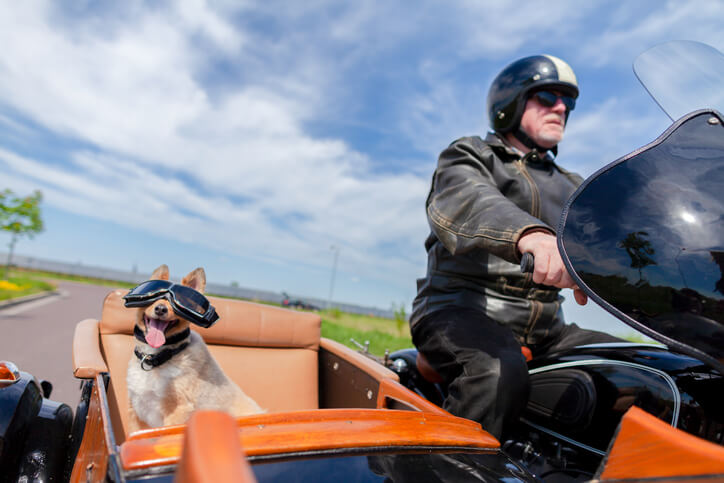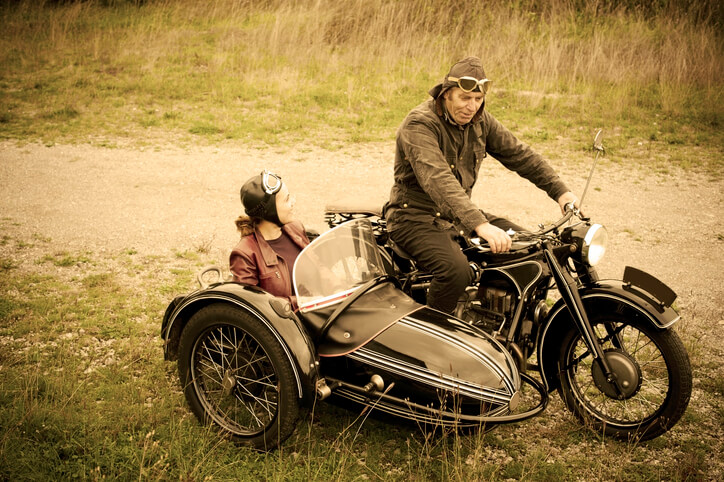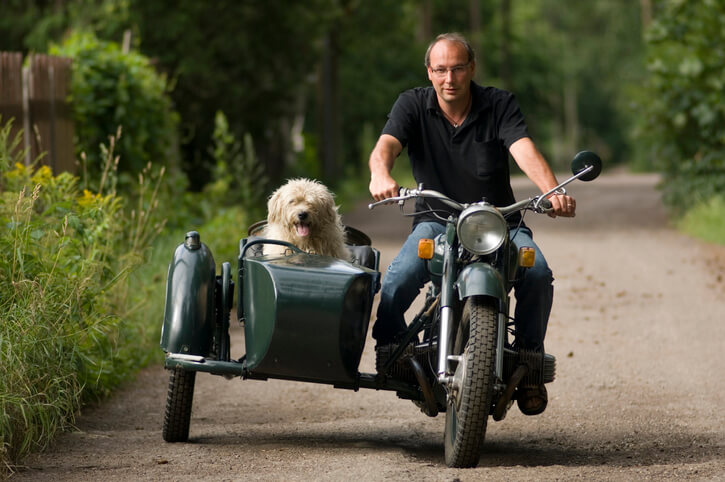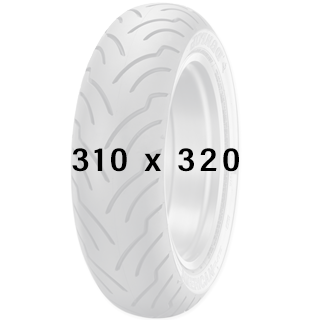Are Sidecars Still Safe and Street Legal for Motorcycles?

A sidecar is a device with a seat and a single wheel on its outside edge. It attaches to the side of a motorcycle, creating a vehicle with three wheels instead of two. Also known as hacks, rigs, or outfits, sidecars come in many shapes and sizes. But are motorcycle sidecars safe, and are they street legal?
Motorcycle sidecars are safe and street-legal, but they’re also great fun. You can still ride with a sidecar in every US state, although each has its own specific rules.
You will only need a standard driver’s license to operate a sidecar outfit. Remember, as helmet laws differ from state to state, always check with your local Department of Motor Vehicles (DMV).
In technical terms, you can add a sidecar to any motorcycle but not every motorcycle can handle a sidecar. However, the motorcycle must have enough performance to pull the extra weight and a strong frame to cope with the extra stress.
A third wheel and extra carrying capacity may seem like the perfect answer to your transportation needs. While riding a sidecar outfit is a unique experience, if you’re to stay safe on the road, it will take some getting used to.
History of Motorcycle Sidecars

In the late 1800s, a French army officer named M. Bertoux invented the earliest known version of a sidecar. The patent for his design didn’t take place until 1905 by Mr. MJ Graham.
In the early 20th century, many people couldn’t afford a car but needed a vehicle with more carrying capacity than a motorcycle. The sidecar offered the perfect solution. It could carry a passenger in relative comfort and was far less expensive than a car.
Sidecars made a significant contribution to the popularity of motorcycles. They were manufactured and sold throughout the 1900s and became widely used in the military. Most military motorcycle sidecars had machine gun mounts and played an important role in WWII. Many GI’s took their old war rigs home, albeit, without the machine guns which grew in popularity back in the United States.
Fast forward several decades. As the traffic increased and the popularity of motorcycles dwindled, the practicality of a motorcycle and sidecar became dramatically reduced.
Today, side-hacks are comparatively rare on our roads, but nevertheless, three-wheelers have attained cult status. A small but dedicated bunch of riders still swear by this nostalgic and practical form of transport.
Washington DC Police officers on Harley-Davidson sidecar outfits have escorted every United States President since Franklin D Roosevelt to the White House. Yet another testament to the vehicle’s historic importance.
Sadly, Harley-Davidson no longer produces sidecars. The only manufacturer still making motorcycle sidecar outfits is Ural Motorcycles in Russia.
Operating a Motorcycle Sidecar

Sidecars are bolted to the motorcycle frame and have no independent steering or power source. Instead, the motorcycle supplies all the forward momentum and stopping power. At the same time, the sidecar’s weight alters the bike’s handling capabilities dramatically.
Riding a sidecar rig requires an entirely different approach to riding.
In the US, sidecars get mounted on the motorcycle’s right side, and a rider’s natural tendency is to lean into a bend. The same goes for a sidecar rig, but that is where the similarity between a motorcycle and a sidecar rig ends. Take a left-hand bend, and the rig’s weight wants to pull in the opposite direction. The rider can counter this by leaning and steering into the bend. Although, sidecars are steered like cars rather than leaned into corners.
The fun begins when negotiating a right-hand bend and you ‘fly the chair’. This phenomenon occurs because the rig’s weight pushes to the outside of the bend. As a result, the sidecar wheel lifts off the ground. Flying the chair looks scary, and the first time it happens is definitely a momentous occasion. Get some practice, though, and it is easily manageable and soon becomes second nature.
Experienced rig riders will often put a 50-100lb sandbag in the sidecar as a counterbalance when riding solo.
Like every aspect of motorcycling, everything feels alien or counterintuitive when starting. The same goes when attaching a sidecar outfit to your motorcycle. You will need to forget everything you know about two wheels and start thinking in threes.
Your overall speed will have been reduced by approximately one-third, and your overall weight increased by a third. The addition of the third wheel means you are now three times wider than a solo motorcycle. What’s more, you will need up to a third more stopping distance. Don’t be put off, though; the payoff is you will get at least a third more fun.
There is no more putting your feet down at stoplights. Better still, wet roads are no longer a big deal and as for snow, bring it on.
The Correct Setting up of a Sidecar Rig is Essential
Unless you buy a brand new sidecar rig, attaching one to your motorcycle and setting it up correctly is best left to the professionals.
Once the sidecar gets attached to the motorbike’s tubular steel frame, the set-up consists of three measurements. These include the sidecar lead dimension and the toe-in and lean-out angles. Besides these adjustments, some rigs feature a brake on the outer wheel that can connect to the bike’s rear brake pedal. Some sidecars have a drive that’s supplied off the motorcycle’s engine which aids in traction. While on the topic of brakes, the additional weight means your brakes have to be in A1 condition.
Last but not least are the tires. Those days of scuffing the edges of the tread in a bend may be gone. Yet, you will still need an aggressive tread pattern with an emphasis on a more blocky tread pattern. Motorcycle sidecars can weigh in excess of 500 pounds even before the passenger gets in them. There is a need for heavy-duty tires with a greater load capacity. The switch from a radial to a bias-ply tire may be a consideration.
Whether you’re adding a third wheel or sticking with two, for professional advice on all your tire needs, locate your nearest Dunlop Motorcycle Tire dealer here.









